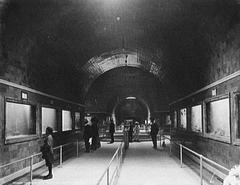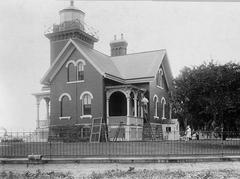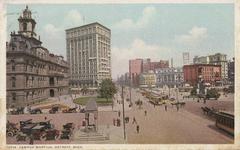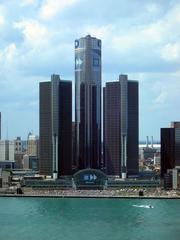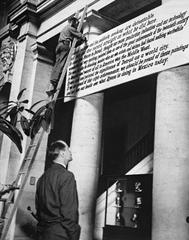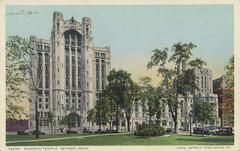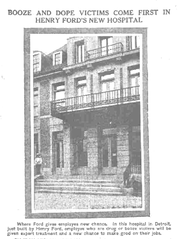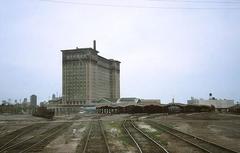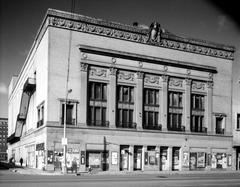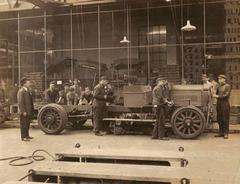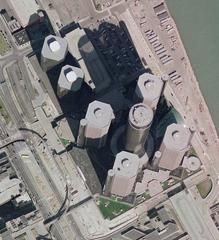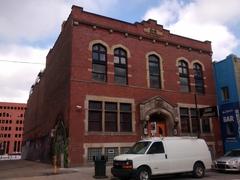
Willis Avenue Station Detroit: Visiting Hours, Tickets, and Historical Sites Guide
Date: 04/07/2025
Introduction
Willis Avenue Station, located in Midtown Detroit, is one of the city’s most significant industrial landmarks. Established in the early 20th century, this operational steam plant has played a pivotal role in Detroit’s urban development, particularly during the automotive boom. Today, it stands as a symbol of innovation, resilience, and the city’s ongoing commitment to preserving its rich industrial heritage.
This guide provides everything you need to know about Willis Avenue Station—from its historical and architectural importance to practical details about visiting, accessibility, nearby attractions, and photography tips. Whether you are a local resident, a history enthusiast, or a visitor exploring Detroit’s industrial past, this article will help you get the most out of your experience.
Contents
- History and Significance of Willis Avenue Station
- The Development of District Heating in Detroit
- Architectural Features and Engineering Innovation
- Visiting Information: Hours, Tickets, and Access
- Accessibility and Travel Tips
- Nearby Attractions and the Willis-Selden Historic District
- Photography Guidance and Visitor Etiquette
- Frequently Asked Questions (FAQ)
- Resources and Official Links
History and Significance of Willis Avenue Station
Willis Avenue Station, built in 1903 by the Detroit Edison Company, was one of the earliest district heating facilities in the United States (ASME Landmark #105). Its centralized steam system dramatically improved energy efficiency, safety, and urban air quality at a time when Detroit was rapidly expanding as an industrial powerhouse.
The plant initially served just twelve customers but soon expanded to provide heat to hundreds of buildings, supporting Detroit’s transformation into the “Motor City.” The station’s robust construction and iconic smokestacks have made it a lasting symbol of Detroit’s manufacturing legacy.
In 1997, Willis Avenue Station was added to the National Register of Historic Places, further cementing its status as a vital piece of Detroit’s urban and industrial history (National Register of Historic Places).
The Development of District Heating in Detroit
District heating in the United States began in the late 19th century, with Birdsill Holly’s system in Lockport, New York, serving as the model. Detroit adopted and advanced this technology, with Willis Avenue Station playing a central role.
Key innovations included:
- Centralized steam generation for multiple buildings
- High-pressure steam distribution networks
- Improved insulation to reduce heat loss
- Automated controls for efficiency and safety
By the 1920s, Detroit’s district heating network, anchored by Willis Avenue Station, was one of the largest and most advanced in the nation (ASME Landmark #105).
Architectural Features and Engineering Innovation
Willis Avenue Station exemplifies early 20th-century industrial architecture, with a utilitarian yet distinctive brick façade, large arched windows, and prominent smokestacks. The building’s design prioritized durability and function, with reinforced masonry and steel framing capable of withstanding intense operational demands.
Notable features:
- Redundant systems for uninterrupted service
- Centralized control rooms and underground steam tunnels
- Smokestacks made of reinforced brick, serving as both functional and visual landmarks
This architectural style reflects the optimism and ambition of Detroit’s industrial era.
Visiting Information: Hours, Tickets, and Access
Address: 50 West Willis Street, Detroit, MI 48201
- Public Access: The interior of Willis Avenue Station is not open for regular public tours due to its operational status.
- Exterior Viewing: Visitors are welcome to view and photograph the exterior from public sidewalks at any time; there are no set visiting hours or ticket requirements.
- Special Events and Tours: Occasionally, local organizations like the Detroit Historical Society offer guided walking tours of the Willis-Selden Historic District, which may include the station’s exterior. Check with the Detroit Historical Society for the latest schedules and ticketing information.
Accessibility and Travel Tips
- Getting There: The station is easily accessible via the QLine streetcar (which runs along nearby Woodward Avenue), bus routes, and ride-share services. Metered parking is available on Willis Street and surrounding blocks.
- Wheelchair Access: The area around the station is generally flat and accessible for those with mobility challenges, though the building itself is not open to the public.
- Amenities: No public restrooms are available on-site; nearby museums and cafes offer facilities for visitors.
- Safety: Midtown Detroit is lively and generally safe, but standard urban precautions are advised, especially after dark.
Nearby Attractions and the Willis-Selden Historic District
Willis Avenue Station is located within the Willis-Selden Historic District, a neighborhood recognized for its diverse architectural heritage and historical importance (Detroit Historical Society). The district features over 100 historically significant buildings, many linked to Detroit’s automotive and professional history.
Nearby attractions include:
- Detroit Institute of Arts (DIA Official Site): One of the nation’s premier art museums, about a 17-minute walk from the station.
- Detroit Historical Museum: Showcasing Detroit’s industrial and social history.
- Charles H. Wright Museum of African American History: Celebrating African American culture and history.
- Museum of Contemporary Art Detroit (MOCAD): Innovative contemporary art exhibitions.
- Hilberry Theatre: Wayne State University’s performance venue.
- Majestic Theatre and Garden Bowl: Historic entertainment complexes.
The district is ideal for walking tours, with many cafes, restaurants, and shops nearby.
Photography Guidance and Visitor Etiquette
- Best Viewing Spots: The station is best photographed from Woodward Avenue and adjacent streets, with dramatic views of the smokestacks.
- Lighting: Early morning or late afternoon light enhances the brickwork and industrial details.
- Respect Operations: Remain on public sidewalks and do not interfere with plant activities.
Frequently Asked Questions (FAQ)
Q: Can I tour the interior of Willis Avenue Station?
A: No, interior access is restricted due to the plant’s operational status. Occasionally, special tours are held during citywide events—check with local organizations for updates.
Q: Are tickets or admission fees required?
A: No, there are no tickets or fees for exterior viewing. Guided walking tours of the district may charge a fee.
Q: Is the site accessible by public transportation?
A: Yes, the QLine streetcar and several bus routes serve Midtown Detroit.
Q: Are public restrooms available?
A: Not on-site; use facilities nearby at museums or cafes.
Q: What are the best nearby attractions?
A: Detroit Institute of Arts, Detroit Historical Museum, Charles H. Wright Museum, and more.
Resources and Official Links
- American Society of Mechanical Engineers Landmark Documentation
- Detroit Historical Society - Willis-Selden Historic District
- Historic Detroit - Willis Avenue Station
- National Register of Historic Places
- Detroit Institute of Arts Official Site
For citywide planning, see the Visit Detroit website.
Conclusion
Willis Avenue Station is a compelling destination for those interested in Detroit’s industrial roots, architectural heritage, and urban evolution. While interior access is limited, the station’s historic exterior and its setting within the Willis-Selden Historic District make it an essential part of any Detroit exploration itinerary. Combine your visit with nearby cultural attractions, take advantage of public transportation, and enjoy the vibrant Midtown neighborhood.
For more information on tours, special events, and Detroit history, connect with the Detroit Historical Society and consider downloading the Audiala app for curated audio tours of Detroit’s historic sites.


